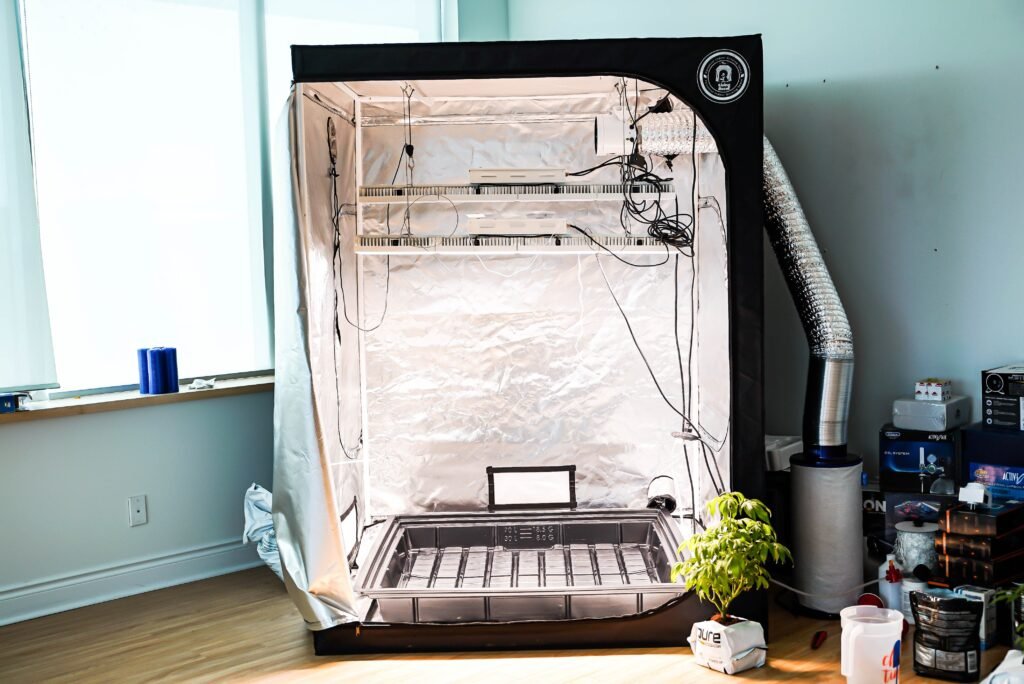Distribution System
August 17, 2023 | by rainwatercollectionsystem.com

Imagine a future where water scarcity is no longer a concern, and the power of nature is harnessed to provide sustainable water solutions. At Rain Water Collection System, we are experts in designing, installing, and maintaining cutting-edge rainwater collection systems that not only benefit the environment but also offer practical advantages. By seamlessly integrating into your property, our systems capture and store rainwater for various uses, reducing reliance on traditional water sources and contributing to water conservation. Lower utility bills and a reduced carbon footprint are just some of the benefits you’ll experience with our tailored solutions. Join us in creating a greener and more sustainable water future, while enjoying the advantages of efficient water utilization.

Overview
A distribution system, in the context of water management, refers to the infrastructure and components responsible for delivering treated water to consumers. This system ensures that water is distributed efficiently and reliably to homes, businesses, and other establishments.
The importance of a well-designed and properly functioning distribution system cannot be overstated. It plays a crucial role in ensuring the availability of clean and safe water for various purposes, including drinking, sanitation, and industrial use. A robust distribution system is necessary to meet the water demands of a growing population and to support economic development.
Types of Distribution Systems
There are two main types of distribution systems: gravity distribution systems and pumping distribution systems.
1. Gravity distribution system
A gravity distribution system relies on natural forces, such as gravity, to move water from a higher elevation to a lower elevation. This system is typically used in areas where the source of water is located at a higher elevation than the consumers. Gravity causes water to flow through pipes and deliver it to consumers without the need for additional pumps or energy input.
2. Pumping distribution system
A pumping distribution system, on the other hand, utilizes pumps to push water from a source to consumers. This system is often employed when the source of water is at a lower elevation or when there is a need to overcome geographical barriers, such as hills or uneven terrain. Pumps provide the necessary pressure to ensure that water reaches all consumers in the distribution network.
Components of Distribution System
A distribution system consists of various components that work together to ensure the efficient flow of water to consumers. These components include pipes, valves, fittings, storage tanks, and pumps.
1. Pipes
Pipes form the backbone of a distribution system, carrying water from the source to the consumers. They come in different materials, such as PVC (polyvinyl chloride), ductile iron, and HDPE (high-density polyethylene), each with its own advantages and limitations. The size and layout of pipes are designed based on the anticipated flow rate and pressure requirements of the system.
2. Valves
Valves are used to control and regulate the flow of water within the distribution system. They are installed at strategic points along the pipes to allow for maintenance, repair, and isolation of specific areas if necessary. Valves can be manually operated or automated, depending on the complexity of the system.
3. Fittings
Fittings are connectors that join pipes together or allow for changes in direction and elevation. They ensure watertight connections and prevent leakage. Common types of fittings include couplings, elbows, tees, and reducers.
4. Storage tanks
Storage tanks are used to store water temporarily and provide a buffer in times of low demand or during maintenance operations. They help maintain a consistent water supply to consumers, especially during peak usage periods. Storage tanks can be elevated or ground-level, depending on the system design.
5. Pumps
Pumps are essential in pumping distribution systems as they provide the necessary pressure to overcome elevation differences and deliver water to consumers. They are typically powered by electricity and are strategically located in booster stations or well houses. Pump selection is based on the system’s flow rate and pressure requirements.
Design Considerations
When designing a distribution system, several factors need to be considered to ensure optimal performance and reliability. These considerations include flow rate requirements, pressure requirements, water quality considerations, and system efficiency.
1. Flow rate requirements
The flow rate requirement of a distribution system is determined by the anticipated water demand. It is essential to accurately estimate the peak and average water consumption to size the pipes and pumps accordingly. Insufficient flow rate can result in inadequate water supply, while an oversized system may lead to energy wastage.
2. Pressure requirements
Pressure requirements vary depending on the type of consumers and the elevation differences within the distribution network. A well-designed system ensures that adequate pressure is maintained at all points to ensure proper functioning of appliances and fixtures. Pressure zones may be established to control pressure variations and meet the specific needs of different areas.
3. Water quality considerations
Water quality is a critical factor in distribution system design. Proper filtration and treatment systems should be in place to remove impurities, pathogens, and contaminants. Consideration should also be given to the prevention of corrosion and scaling, which can affect water quality and the lifespan of the system components.
4. System efficiency
A distribution system should be designed to minimize energy consumption, water loss, and operational costs. Efficiency measures, such as using properly sized pipes and pumps, employing pressure regulation techniques, and implementing smart technology, can significantly improve the overall performance of the system.

Distribution System Maintenance
Regular maintenance is necessary to ensure the continued efficiency and reliability of a distribution system. Several maintenance activities should be performed as part of a routine maintenance program.
1. Routine inspection
Routine inspections involve visually assessing the condition of pipes, valves, fittings, and other system components. This helps identify any signs of wear, damage, or deterioration. Regular inspections can help detect potential issues early, preventing major failures and costly repairs.
2. Leak detection and repair
Leaks in a distribution system can result in significant water loss and reduced system efficiency. Regular leak detection surveys using acoustic or visual methods should be conducted to spot and repair leaks promptly. This not only saves water but also helps prevent damage to infrastructure and minimizes the risk of contamination.
3. Cleaning and flushing
Over time, sediments, debris, and biofilms can accumulate in the pipes, reducing flow capacity and compromising water quality. Regular cleaning and flushing of the distribution system help remove these deposits and maintain optimal flow rates. Flushing also helps maintain disinfectant levels and prevent stagnant water.
4. System upgrades and modifications
To adapt to changing demands and advancements in technology, distribution systems may require upgrades or modifications. This can include replacing outdated components, expanding capacity, or integrating new control systems. Regular evaluation and assessment of the system’s performance can highlight areas for improvement and inform upgrade decisions.
Common Challenges in Distribution Systems
Distribution systems face several challenges that can impact their efficiency and reliability. Understanding these challenges is crucial in implementing appropriate measures to mitigate their effects.
1. Pressure loss
Pressure loss can occur due to friction in the pipes, elevation changes, or faulty components. Low pressure can result in inadequate water supply, reduced appliance performance, and customer dissatisfaction. Pressure monitoring and control systems can help manage and maintain optimal pressure levels.
2. Water hammer
Water hammer is a phenomenon where sudden changes in flow velocity cause pressure surges within the system. This can lead to pipe damage, noisy vibrations, and even the failure of system components. The installation of air chambers, surge tanks, or pressure relief valves can help minimize the effects of water hammer.
3. Corrosion
Corrosion is a common problem in distribution systems, especially in older infrastructure or areas with aggressive water chemistry. Corrosion can lead to pipe degradation, leaks, and water quality issues. Regular inspection, protective coatings, corrosion-resistant materials, and cathodic protection can help mitigate corrosion risks.
4. Scaling
Scaling occurs when minerals in the water precipitate and accumulate on the interior walls of pipes and fixtures. This can reduce flow rates, increase energy consumption, and lead to premature failure of components. Water treatment measures, such as water softening or chemical additives, can help control scaling.
5. Contamination
Contamination in a distribution system can occur through backflow, cross-connections, or intrusion from external sources. It poses a serious health risk to consumers and can lead to waterborne diseases. Establishing and enforcing backflow prevention measures and regular water quality testing are essential to prevent contamination incidents.

Efficient Water Distribution Practices
Implementing efficient water distribution practices can improve the performance and sustainability of distribution systems.
1. Metering and monitoring
Effective metering and monitoring allow for accurate measurement of water consumption and flow rates. This information helps identify leaks, track usage patterns, and optimize system performance. Smart metering technologies enable real-time data collection and remote monitoring for efficient water management.
2. Pressure regulation
Pressure regulation techniques, such as pressure reducing valves (PRVs) or variable speed pumps, can help maintain optimal pressure levels within the distribution system. This minimizes energy consumption, reduces pipe stress, and prevents water loss due to excessive pressure.
3. Demand management
Demand management strategies aim to influence consumer behavior and reduce peak water demands. These strategies can include water conservation campaigns, incentives for efficient water use, and implementing tiered pricing structures. By managing demand, the distribution system can operate more efficiently and reduce the need for costly infrastructure upgrades.
4. Distributed storage
Distributed storage involves using smaller storage tanks or reservoirs strategically located within the distribution system. These tanks help balance water supply and demand, improve system resilience, and reduce the risk of water shortage during peak demand periods or emergencies.
5. Smart technology integration
The integration of smart technologies, such as sensors, data analytics, and automated control systems, can optimize the performance of distribution systems. These technologies provide real-time monitoring, predictive maintenance, and advanced data analysis for proactive decision-making and efficient operation.
Distribution System Optimization
To ensure the long-term sustainability and efficiency of distribution systems, optimization techniques and tools can be utilized.
1. Hydraulic modeling
Hydraulic modeling involves creating a computerized representation of the distribution system to simulate its operation under different conditions. It helps assess the impact of changes, such as pipe upgrades, pressure control strategies, or system expansions, before implementation. This allows for informed decision-making and optimization of system performance.
2. Network analysis
Network analysis involves analyzing the hydraulic behavior of the distribution system using mathematical models. It helps identify bottlenecks, optimize pipe sizing, and determine optimal pump operation. Network analysis can also aid in identifying areas prone to leaks or pressure variations, allowing for targeted improvements.
3. Leak detection systems
Leak detection systems use advanced technologies, such as acoustic sensors or pressure monitoring, to detect leaks in real-time. These systems can provide early detection, precise location, and rapid response, minimizing water loss and reducing the risk of infrastructure damage. Integrating leak detection systems into the distribution system can greatly improve its efficiency and sustainability.
4. Pressure management systems
Pressure management systems employ advanced control algorithms to regulate and optimize pressure levels within the distribution network. By maintaining consistent and optimal pressure, these systems minimize pipe stress, reduce energy consumption, and prevent water loss. They can also help mitigate water hammer and improve the overall reliability of the system.

Distribution System Upgrades
Over time, distribution systems may require upgrades to improve performance, address aging infrastructure, and meet changing demands.
1. Pipe replacement
Old or deteriorating pipes can lead to water loss, leakage, and reduced system efficiency. Replacing aging pipes with modern, corrosion-resistant materials can improve flow capacity, reduce maintenance needs, and enhance water quality. Pipe replacement projects should consider factors such as pipe material selection, sizing, and installation techniques.
2. Valve and pump upgrades
Outdated or inefficient valves and pumps can hinder the performance of a distribution system. Upgrading to modern, energy-efficient equipment can optimize flow control, pressure regulation, and overall system efficiency. Pump and valve upgrades should be based on a thorough assessment of the system’s needs and performance requirements.
3. Automation and control systems
Automation and control systems can enhance the operational efficiency of a distribution system. These systems enable remote monitoring, data analytics, and automated control of valves, pumps, and other system components. Automation improves response times, reduces the risk of human error, and enables proactive management of the system.
4. Water loss reduction initiatives
Water loss is a significant issue in distribution systems and can result from leaks, unaccounted-for water, or metering inaccuracies. Implementing water loss reduction initiatives, such as active leak detection, pressure management, and consumer engagement programs, can help minimize water loss and improve the system’s overall performance.
Future Trends in Distribution Systems
The future of distribution systems is driven by emerging technologies and sustainable practices that aim to optimize water management and improve resource efficiency.
1. Smart grids
Smart grids combine advanced sensors, meters, and data analytics to create a more intelligent and efficient distribution system. These grids enable real-time monitoring, demand response programs, and optimal energy management. By integrating water and energy systems, smart grids help reduce costs, enhance system reliability, and promote sustainability.
2. Internet of Things (IoT) integration
The integration of IoT devices into distribution systems allows for real-time monitoring and remote control of various system components. IoT devices, such as pressure sensors, water quality sensors, and flow meters, enable predictive maintenance, efficient resource allocation, and improved system performance.
3. Predictive analytics
Predictive analytics utilizes advanced algorithms and historical data to forecast system behavior and anticipate potential issues. By analyzing patterns and trends, predictive analytics can help identify areas prone to leaks, predict equipment failures, and optimize maintenance schedules. This proactive approach minimizes downtime, reduces costs, and improves system reliability.
4. Sustainable materials and technologies
Advancements in materials and technologies are driving the development of more sustainable distribution systems. This includes the use of eco-friendly pipe materials, such as recycled plastics or corrosion-resistant alternatives, and the integration of renewable energy sources for powering pumps and control systems. These sustainable solutions contribute to reducing the environmental impact of distribution systems.
In conclusion, a well-designed and efficiently maintained distribution system is essential for the reliable delivery of clean and safe water to consumers. This comprehensive article has provided an overview of the definition and importance of distribution systems, discussed the different types and components, highlighted design considerations, maintenance practices, common challenges, and efficient water distribution practices. Additionally, it has explored optimization techniques, the need for system upgrades, and future trends in distribution systems. By continuously improving and optimizing distribution systems, we can ensure sustainable water management for future generations.
RELATED POSTS
View all





